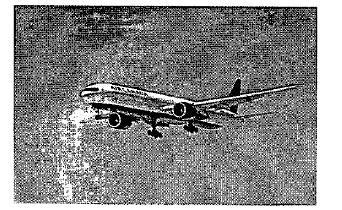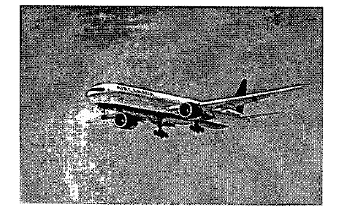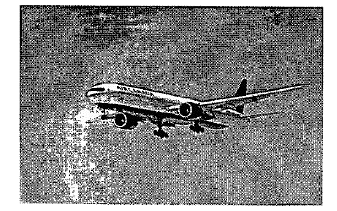An aeroplane travelling at a speed of 500 km/hr tilts at an angle of 30° as it makes a turn. What is the radius of the curve ?
To find the radius of the curve that the aeroplane is making while tilting at an angle of 30°, we can follow these steps:
Step 1: Convert the speed from km/hr to m/s
The speed of the aeroplane is given as 500 km/hr. To convert this to meters per second (m/s), we use the conversion factor:
Speed in m/s=Speed in km/hr×518
Calculating this gives:
Speed in m/s=500×518≈138.89m/s
Step 2: Identify the angle of tilt
The angle of tilt (θ) is given as 30°. This angle will be used in the calculation of the radius.
Step 3: Use the formula for the radius of the curve
The relationship between the radius (R), speed (V), angle of tilt (θ), and acceleration due to gravity (g) is given by the formula:
tan(θ)=V2R⋅g
From this, we can rearrange the formula to solve for R:
R=V2g⋅tan(θ)
Step 4: Calculate the value of tan(θ)
For θ = 30°:
tan(30°)=1√3≈0.577
Step 5: Substitute the values into the formula
Now we can substitute the values we have into the formula for R:
- V = 138.89 m/s
- g = 9.8 m/s²
- tan(30°) ≈ 0.577
R=(138.89)29.8⋅0.577
Calculating V2:
V2=(138.89)2≈19356.67m2/s2
Now substituting this into the formula for R:
R=19356.679.8⋅0.577≈19356.675.669≈3410.03m
Step 6: Round the result
The radius of the curve is approximately:
R≈3410meters
Final Answer
The radius of the curve is approximately 3410 meters.
---
The speed of the aeroplane is given as 500 km/hr. To convert this to meters per second (m/s), we use the conversion factor:
The angle of tilt (θ) is given as 30°. This angle will be used in the calculation of the radius.
The relationship between the radius (R), speed (V), angle of tilt (θ), and acceleration due to gravity (g) is given by the formula:
For θ = 30°:
Now we can substitute the values we have into the formula for R:
- g = 9.8 m/s²
- tan(30°) ≈ 0.577
The radius of the curve is approximately:
The radius of the curve is approximately 3410 meters.
Topper's Solved these Questions
- BOOK - ICSECHAPTER - CIRCULAR MOTION EXERCISE - MODULE 1 (CONCEPTUAL SHORT ANSWERS QUESTIONS WITH ANSWERS )11videos
CIRCULAR MOTION
- BOOK - ICSECHAPTER - CIRCULAR MOTION EXERCISE - MODULE 1 (LONG ANSWER QUESTIONS)8videos
CIRCULAR MOTION
- BOOK - ICSECHAPTER - COMPETITION CARE UNITEXERCISE - OBJECTIVE QUESTIONS FROM PREVIOUS IAS EXAMINATIONS50videos
COMPETITION CARE UNIT
Similar Questions
Knowledge Check
- Question 1 - Select One
A jet airplane travelling at the speed of 500km−1 ejects its products of combustion at the speed of 1500kmh−1 relative to the jet plane. What is the speed of the burnt gases with respect to observer on the ground ?
A500kmh−1B1000kmh−1C1500kmh−1D2000kmh−1 - Question 2 - Select One
An aeroplane travelled a distance of 400km at an average speed of x km/hr. On the return journey, the speed was increased by 40km/hr.

The positive value of x isA220B240C200D160 - Question 3 - Select One
An aeroplane travelled a distance of 400km at an average speed of x km/hr. On the return journey, the speed was increased by 40km/hr.

The expression for times taken for the onward journey isA400xB400xCx400Dx+400
A man travels at a speed of 20 Km/hr. and then returns at a speed of 30 Km/hr. His average speed of whole journey is
View SolutionA car is travelling at the average speed of 50 km/hr. How much distance would it travel in 12 minutes?
View SolutionA jet airplane travelling at the speed of 500km−1 ejects its products of combustion at the speed of 1500kmh−1 relative to the jet plane. What is the speed of the burnt gases with respect to observer on the ground ?
View SolutionAn aeroplane travelled a distance of 400km at an average speed of x km/hr. On the return journey, the speed was increased by 40km/hr.

The expression for time taken for the return journey isView SolutionAn aeroplane travelled a distance of 400km at an average speed of x km/hr. On the return journey, the speed was increased by 40km/hr.

The nature of roots of the equation, formed in part (iii), isView Solution

